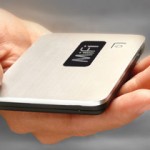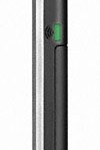Novatel Wireless MiFi 2200 Mobile Hotspot review
The Novatel Wireless MiFi 2200 has the potential to revolutionize portable computing. I believe it could revive the use of laptops for travel.
I stopped carrying a laptop years ago. It stopped making sense to carry a laptop that weighed over four pounds – just in case I needed to use it in a public hotspot location with an open WiFi signal. When netbooks came out, I rejoiced because it meant I could have less to lug around. However hotspots are rare, and unsecured wireless connections are even more rare.
My smartphone does a great job for using Twitter, Facebook and reading general news, but it cannot be considered a productivity tool or laptop replacement for day-to-day jobs.
It seems that desktops are being replaced by large laptops, netbooks and smartphones are replacing portable laptops and everyone is mad because Internet access is becoming less ubiquitous as companies find new ways to charge for it.
Now, on to the review. The Novatel Wireless MiFi 2200 is an EVDO modem – but it is oh, so much more. Once configured, the MiFi also becomes a battery powered hotspot for up to five devices. The MiFi is not a WiFi repeater, it is an EVDO modem with a built-in wireless access point.
The device is exactly the dimensions as a credit card and thinner than an iPhone.
The MiFi has a removable and rechargeable Li-ion battery that is rated for 4 hours use and 40 hours standby. See link in first paragraph for all the tech specs. The unit is charged either via the USB cable from your PC or via the included travel charger. The connection on the device itself is micro USB (see images above).
The MiFi 2200 is actually two devices in one. If connected to the computer directly, the device acts as an EVDO modem allowing the computer to connect to the web via software that comes stored on the device itself. If the device is plugged into the wall or run wirelessly from the battery, you connect to the web via the operating systems’ wireless connectivity manager. When setup as hotspot the device allows up to five devices to connect to the web via WiFi.
Data speeds in Grand Junction, CO, where I tested it, weren’t fantastic, but they did the job. I continually received .5Mbps connection speeds for both up and download. The device is rated for up to 3.1Mbps down and 1.8 upload. The device we reviewed was running on the Verizon 3G network which is much slower in Grand Junction than the Sprint 3G. It would be interesting to compare the Sprint MiFi with the Verizon version and see if there was a noticeable speed difference. Although .5Mbps isn’t great, it was more than sufficient for the reasons I carry a laptop – web surfing, Twitter, Facebook, blogging, etc.
The MiFi is a fantastic product and it is extremely easy to use. The only manual configuration required was typing the 11-digit password to connect to the WiFi. Running it as a modem took a few minutes, but it was all waiting for bars to move across the screen as the software installed and occasionally clicking on the affirmative during the questions asked during the standard software install process.
As I mentioned in the opening paragraph, the MiFi has the potential to change the landscape of mobile computing. However, there is one disadvantage that has nothing to do with the product itself. The service is extremely expensive. It is difficult to pinpoint the target market for the MiFi under the current rates.
The perfect customer for this product has $60 per month (Sprint or Verizon) to spend on their already high cell phone bill , a type of work that needs to be done constantly monitored on a web platform that won’t work with a smartphone, and little access to public hotspots. This includes a small percentage of business travelers, rich people who live in rural suburbs and folks who just have to have the latest gadget. The price makes in impractical for students, teachers and others who would find it the most useful.
With every McDonald’s, Borders, Barnes & Noble and countless hotels and coffee shops offering free or inexpensive WiFi, it is difficult find the market that believes that $60 per month is worth not having to wait until they can get to a hotspot.
An argument can be made for the last mile, but chances are that most people living in the last mile don’t have EVDO access either. There are also many ISPs offering HSDPA Internet service. Although HSDPA services generally only cover a specific region, they do address the last mile, ubiquitous WiFi within geographic boundaries and generally cost less than EVDO while offering better connection speeds.
It is difficult to say where the ubiquitous WiFi path will lead to next, but at $60 per month, the MiFi is a little short changed. It’s too bad because the product would really take off it rates were reasonable.


